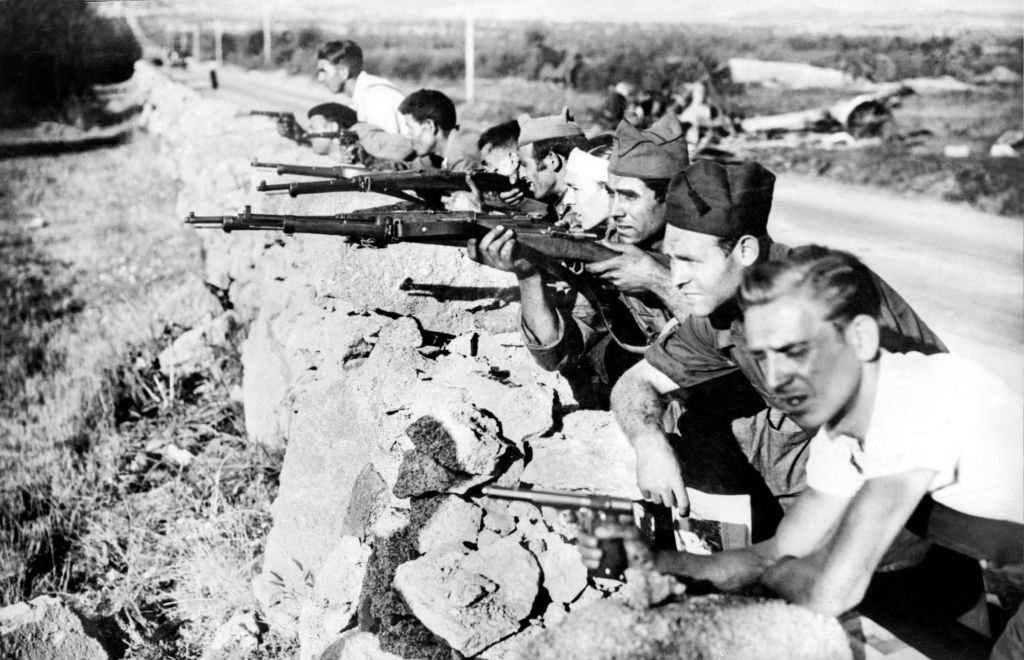The past comes in convenient lumps, each able to provide a lesson. When I was growing up, it was the Munich Agreement, giving Hitler the Sudetenland, and Suez, that embarrassment, that historians tried to glean some wisdom from. We later embraced the lessons from Vietnam, about guerrilla warfare, and after that the teachings of Iraq and Afghanistan, about counterinsurgency. All wars taught us something, apparently.
Ukraine has appealed for international military support by presenting itself as a testing ground for future wars. The Ukrainian defence minister says that Ukraine is the perfect place for the arms industry to try out its new kit, and our own defence secretary has said as much too. You can learn your lessons, make your mistakes, in Ukraine. It’s a useful proxy for another, future conflict. But, in war, how much can we really learn and reapply elsewhere?
Historians often say the Spanish Civil War was a dress rehearsal for world war two. Only a few years separated the two conflicts, and the Spanish Civil War supposedly gave Germany a chance to try out new bombing techniques, which influenced the blitz it inflicted upon Britain. In reality, though, the parallels between the two conflicts are weak. The naval dimension to the Spanish Civil War was small scale – the greater strength of the Republican navy failed to sway the struggle, and could not protect shipping from hostile submarines and aircraft – and the use of aircraft was very limited compared to the strategic air warfare of world war two. Far from the Civil War providing the Germans with an opportunity to prepare for Blitzkrieg, it was similar to the American Civil War in being seen by many commentators as somewhat primitive. Bombing captured the imagination of civilians but its impact on the conflict in Spain was exaggerated by them.
There wasn’t much to learn about tank warfare either. In March 1937, having visited Franco’s army, British Military Intelligence officer J F C Fuller wrote:
It is in no sense a great war, a trench war… Of tanks I saw few… Tank tactics are conspicuous only through their absence… I do not think we have to learn from either tanks or anti-tank weapons in this war.
And in April 1938, after visiting the Nationalists in Spain, the British Assistant Military Attaché in Paris reported that he was witnessing:
A war in which the majority of participants are almost entirely untrained… a war in which modern weapons are used but not on the modern scale. In view of these singularities, it will be obvious that the greatest caution must be used in deducing general lessons from this war: a little adroitness and it will be possible to use it to “prove” any preconceived theory.
There was neither the equivalent to the German offensives in 1939-41, nor to the large-scale, high-intensity, attritional fighting that was subsequently so significant in the world war in Europe.
So what is there to learn from Ukraine? In 2022, there was a blaze of optimism about the ability of new weaponry and methods to thwart Russian attackers, but the key factors were determined Ukrainian resilience, and poor Russian planning and execution. Those who readily discern military revolutions have been misled. It is an advantage to defend one’s own land, and varying the equations of weaponry only makes so much difference. Artillery has proven its worth.
All this, though, tells us little about the nature of conflict and causes of success in other wars, which in the last year were fought in places including Myanmar, Ethiopia, Niger, Mali, and Sudan. Soon, too, there might be a war over Taiwan. Indeed, there is a danger of reading more widely from the specifics of Ukraine. The politics is different and the terrain incomparable. The weapons are not the same. The tactics are unique.





Comments